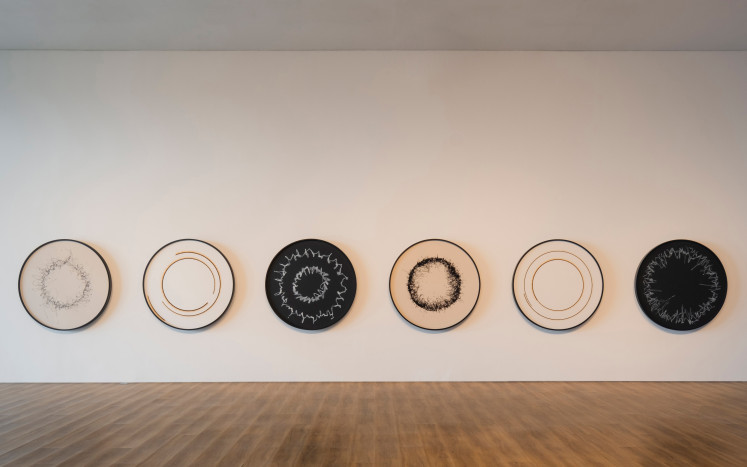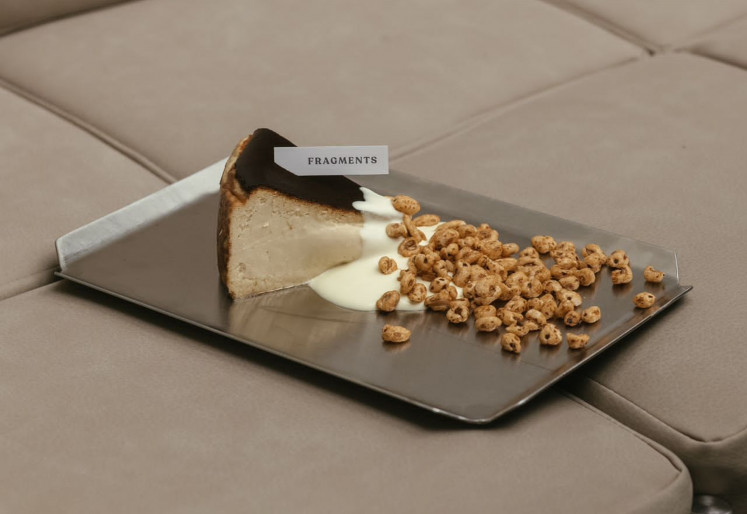Popular Reads
Top Results
Can't find what you're looking for?
View all search resultsPopular Reads
Top Results
Can't find what you're looking for?
View all search resultsFashionable Muslim wear necessary to attract younger generation: Ria Miranda
Earlier this week, we featured Six Muslim fashion wear designers to adore. The Jakarta Post recently interviewed Ria Miranda, one of the designers acknowledged in the article.
Change text size
Gift Premium Articles
to Anyone
E
arlier this week, we featured Six Muslim fashion wear designers to adore. The Jakarta Post recently interviewed Ria Miranda, one of the designers acknowledged in the article.
How did you start doing design?
I got interested in hijab fashion because, at the time, it hadn't been developed like the way it is right now. It felt like the only one who wore the hijab were mothers, where then the selection of hijabs out there seemed monotonous. Back then, I designed clothes to wear myself. While learning, I looked for inspiration and exercised the skills I got from fashion school. After I graduated from ESMOD in Jakarta, I found out that it wasn’t easy to create a brand. Before deciding to build my brand, I worked as a fashion stylist for a Muslim magazine, which helped me expand my experience, knowledge and network. Thank God, in 2009 I was able to start my business and keep it running until now.
(Read also: Seven must-watch documentaries for a head start into fashion world)
Why do you choose pastel colors as your design theme?
Soft pastel colors always gives a calm and modest feeling. I want to present a polite, modest and consistent Muslimah (Muslim woman) image with pastel colors. I want Muslimah to continue looking beautiful in simple but elegant clothes, although the most important thing is for them to have a smile on their face and be polite. This can only be achieved if we wear clothes modestly and politely, so that we can radiate not only externally but also the beauty from within our heart.
There are people who think that the hijab shouldn’t be modified, that it shouldn’t be made fashionable. What are your thoughts on that?
What is fashionable or not is relative. To me, using a belt outside your clothes is normal, but to some people that is already too fashionable. To me, I believe that beauty is good. As long as the mindset is correct, we should express our beauty responsibly. If Muslim clothes are not fashionable, wouldn’t it be hard to get the young generations to wear hijabs?
(Read also: Slowly but surely, Vinora ready to compete in Woolmark Prize)
How do you view the competition in the Indonesian Muslim fashion industry as well as international markets today?
My dream is for Indonesia to be the Qibla (direction Muslims pray to) of the fashion world. The industry has been growing rapidly. Not only domestically, there are many Indonesian designers that have set their foot in the international market. To me, the phenomenon that has been happening in recent years can be used as momentum to positively compete, working to show the best and contributing to build Indonesia’s creative economy. We need to have a strong foundation as well, such as in distribution, human resources and in other aspects so that it will be easier for us to compete with other countries in fashion. (kes)











